Every decade or so, a film comes along that defines a generation. It paints a vivid picture, exposes social ills and captures the fabric of a culture. For my aunt it was Cooley High, and for my older sister it was Krush Groove. For me—a Hip Hop loving ‘80s baby from New York City—it was Juice. It’s a rare thing when Hollywood chronicles the rise of boys to men in Black America. But when it’s done correctly, the effects are long lasting and significant.
Juice celebrated its 20-year anniversary Wednesday. Directed by Ernest Dickerson, the renowned cinematographer for Spike Lee joints like Malcolm X, Juice is a coming of age story about four black teenage boys. Q (Omar Epps), Steel (Jermaine Hopkins), Raheem (Khalil Kain) and Bishop (Tupac Shakur) navigate their way through their Harlem neighborhood, trying to make sense of friendship, fear and respect.
Raking in over $20 million in U.S. box office sales, the revered film was also a springboard that launched successful acting careers for the four budding stars. Omar Epps, currently co-starring on Fox’s “House,” went on to star in box office hits like Higher Learning and Love & Basketball. Meanwhile Khalil Kain, most recently spotted in Tyler Perry’s For Colored Girls, landed major roles in films like Love Jones, Renaissance Man and television sitcoms like “Girlfriends.” Jermaine Hopkins, who was recently arrested for drug possession and intent to sell, starred in Def Jam’s How to Be a Player, Phat Beach and appeared in several TV shows like “Moesha” and “The Parent ‘Hood.” And 2Pac, besides becoming one of the most profound figures in Hip Hop, was on the brink of a very successful acting career, starring in films like Poetic Justice and Above the Rim.
For me, Juice was indeed a very special film with a very special cast. Though funny and light hearted at times, the flick was also acutely tragic. Smushed in between Steel’s beat boxing in the mirror and Q’s smooth talking (in the record store), there were serious themes. After watching the movie some 400 odd times over the past 20 years (no, I’m serious), here are the top five themes that resonate with me.
Hip Hop Don’t Stop
“I wanna pick up some party tapes from the Record Rack for my audition tape. That’s aiight with you, Raheem?” -Q
I’d argue that Hip Hop was the fifth character in the film; it was everywhere. I mean, the movie opened to Eric B & Rakim’s “Know the Ledge.” Does it get more Hip Hop than that? Not unless it’s the soundtrack, of course. The gold-selling project, produced by music pioneer Hank Shocklee, was just as profound as the cult classic. Songs from artists like Big Daddy Kane and Cypress Hill moved the movie along and defined scenes. And actual Hip Hop figures flooded the cast too, including Queen Latifah, Treach, DJ Jazzy Joyce, “Yo! MTV Raps” hosts Fab 5 Freddy and Doctor Dre, Special Ed, EPMD and DJ Red Alert.
Dickerson perhaps showcased the genre’s relevance best with Q’s character. Through the “local” DJ, he illustrated the influence of Hip Hop and how the art was (and still is) a refuge for many black men. As the strongest and most sensible character, Q had the best chance for a bright future. And it was because his hope was rooted in Hip Hop. It was no longer just, “Either you slangin’ crack-rock or you got a wicked jump shot.” Hip Hop could get you out of the hood too.
The very storyline of Juice mirrored the landscape in the early ‘90s. New York was the epicenter of Hip Hop during the “Golden Era.” The music was fun and naïve, but most (like Q) could sense that trouble (Bishop) was ahead for the genre.
It’s A Jungle Out There
“Fuck that, we use to be like brothers.” -Q
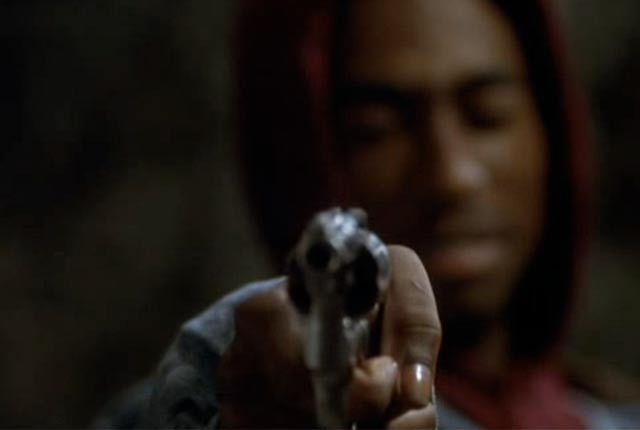
The early ‘90s saw the height of the crack cocaine epidemic. New York City streets were riddled with gangs, violence, shootings and robberies. There was, as the M-O-B-B poignantly stated, “A war going outside, no man is safe from.” Juice echoed this climate with the constant beef between the boys and gang leader Radames, local bodega owner Quiles and ultimately Raheem’s own death at the hands of his friend, Bishop. Violence was rampant. The murder rate in New York City peaked in 1990, and was at one of its highest rates with almost 2,400 homicides in 1992 when Juice was released. Young black men were dying on the streets at unprecedented rates. Friends and families were left with only tears, unanswered questions and cold cases.
But things have improved, drastically. New York’s murder rate is down 60% according to figures from The Disaster Center, and robberies are down over 70%. Some experts speculate that the declines are a result of the crumpled crack cocaine craze, stricter gun control laws and stiffer prison sentences. “Too bad Raheem had to die first, huh.”
Insane In The Membrane
“You right, I am crazy. But you know what else? I don’t give a fuck.” -Bishop
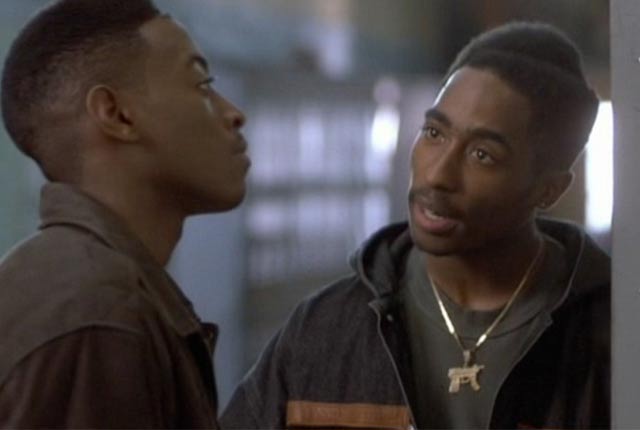
Bishop was indeed driven by power, or juice as the movie so aptly describes. But he was probably driven by a lack of serotonin in his brain as well. Lots of men want respect, but few go around taking down their own crew. Even New Jack City drug kingpin Nino Brown needed his support system, only killing G-Money because he started on that crack pipe. It seems like Bishop’s killing spree and obsession with power was the onset of a mental disorder.
We saw early on that Bishop’s father struggled with “something” as he sat comatose watching cartoons. And Radames even made mention of him. Sadly, mental illness in the black community is often ignored and swept under the rug or into the back room. According to the Black Mental Health Alliance, less than half of African American adults with mental disorders seek treatment for such health problems, and less than one third of their children receive treatment.
It has long been known that mental illness in the black community is stigmatized. The National Alliance on Mental Illness says that African Americans tend to rely on family, religious and social communities for emotional support, rather than turning to health care. Not turning to the professionals, unfortunately, can sometimes turn a young black man into Roland Bishop.
R-E-S-P-E-C-T
“You gotta be ready to throw down, stand up and die for that shit like Blizzard did. If you want some Juice.” -Bishop
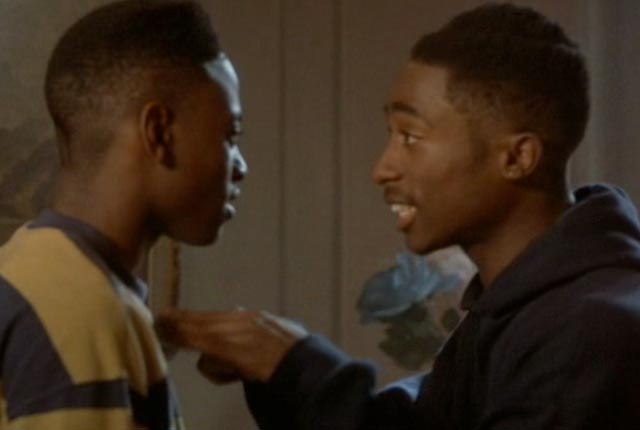
No doubt, to me the most obvious theme in the film was the concept of fear versus respect. Most of us desire to be respected, but few know how to achieve it without imposing fear. And respect is very different from fear. Each character in the film struggled with the concept of respect; Q in his music, Bishop in the streets and Steel in his crew. The only character that seemed well respected in various circles was Raheem. Unfortunately, it was this very respect and Bishop’s covetousness of it that led to his demise.
Boys Just Wanna Have Fun
“I was doing the hoochie-coochie, my friend.” -Steel
Let’s not forget the fun stuff-the jokes, smiles and laughs, which allow for such an affinity toward the film even today. The four friends had their fair share of fun skipping school, cracking jokes, running from cops (we all have different ideas of fun) and pursuing teenage love affairs. Was I the only one puzzled by Q’s romantic relationship with the twenty-something Yolanda? All in all, great memories were made. And just like many of our high school years, Juice was a clever mix of laughs, tears and lessons all served up with a side of Hip Hop.
Lakeia Brown is a freelance writer living in New York. Her work has appeared in publications and websites like Essence, The Atlanta-Journal Constitution, New York Newsday and Theroot.com.

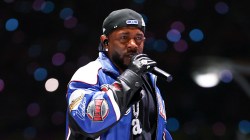
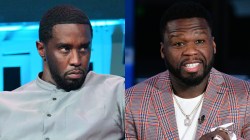


![50 Cent Shares Unseen Diddy Footage From Netflix Documentary: "[It] Shows You His Character"](https://hiphopdx.com/wp-content/uploads/2025/12/50-cent-diddy-documentary-trailer-unseen-footage.jpg?w=250)
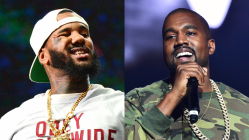
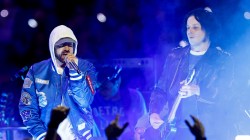
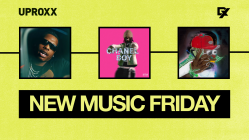
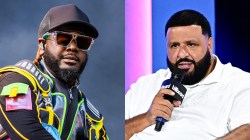
Juice is such an amazing film, Pac was a phenomenal actor and O.E. … Riverside MOTHERFUCKA
I much prefer Above The Rim to Juice. That was ‘Pac’s coolest role.
you aint never lied!!
Above the Rim was a cartoony basketball film with poor acting and some of the worst story lines in movie history. Who plays basketball on a rooftop and falls off when they dunk the ball when the backboard breaks off? They’re closelining each other in the game and stealing the ball after punching the ball handler in the face. Ridiculous. And Bernie Mack as Flip the Bum, well that was pretty cool.
I read an article that discusses why Bishop’s father was staring clueless like that. Apparently there was a scene that was cut from the final version that detail that his Bishop’s father was molested in jail.
Thats true. I watched the makers of the film commentary and they confirmed there was a scene that explained his pops depression. He was raped in jail. It was cut from the film.
thanks for that info, i didnt even connect the dots!
@Tommy, Where’d you cop the Juice special edition? I can’t see it on Amazon.
I hope Drake gets back into acting as well, he’ll put 2pac to shame. Ironically you can draw a lot of parallels between Juice and degrassi
Kill yourself immediately
NO YOU CAN’T!!!!
…fucking douche
I never comment on these things, but you’re an idiot.
eatshit.org
Whatever man
that is fuckin hilarious. drake couldnt wax pacs wax figures nuts..
co sign that shit!
I actually saw this the first night it came out and i wanted to change my name to bishop. i was 9, and my mother took me to see it w/ a sold out audience. Lol people laugh at me sometimes when i tell them i saw this in the theater, cuz it was so long ago!!!!!
Remember when everyone said 2Pac’s antic’s in real life were just him reenacting Bishop… I remember a Source letter saying “the film is over, stop playing the role”.
… guess he couldn’t stop, huh?
no dumb ass. tupac was always like that hen he 1st came into the rap game
Hold on now dumb ass…Jack Nicholson said when he played the Joker in Batman it fucked him up mentally playing that character on a daily basis. People said the same about Tupac a lot. Even Tupac said he had to change his behavioral patterns and thought processes in real life to play the role of Bishop. However, I dont think Bishop has anything to do with Tupac’s fate.
It had an interesting plot, but the acting was horrible, and compared to Boyz in the Hood, or even Menance, it just wasn’t very memorable. I actually like In Too Deep more than this, and that was pretty bad too.
agreed.
Man Shut Da Fuck Up Bitch
In Too Deep? LOL! I liked that movie when I was 14…Juice is a cult classic!!
Well aside from the criticisms of the film that y’all have…hats off to Ms. Lakeia Brown!
This is one of the most well-analyzed, well-written pieces of work that I’ve seen on this or any other hip-hop site. Way to take it there and not simply rehash the plot or use it at another excuse to talk about Pac.
And to y’all talking about the prison rape explanation that was cut from the movie.
Remember that’s what Radamez says to Bishop when they have to separate them in the one scene.
The quote Lakeia is talking about is when he says “If you wanna talk about faggots you don’t have to look no further than your Pa. I heard he likes being a PRISON YARD HO!”
🙂
I love “Juice” as much as any Black kid that grew up in the hood…but to watch any movie 400 times requires a special sort of retardation. I’m praying for you Lakeia
As I am for you Tim.
YEAH DATS COOL BUT WHERE DA PUSSY AT?!
I dont know if it requires retardation or prayers but 400 times is A LOT. My favourite movie is Pulp Fiction and I havent seen it nearly that many times. Of course Juice is a few years older so I guess I still got some time. English Motherfucker, Do you speak it!?
Classic Movie!! RIP 2Pac!
POW!I JUZ KILLED SAM.”NOW I GOT THE JUICE”
Very good piece. I remember when this film came. The film itself had much to prove. Could Pac act? Can Ernerst Dickerson come out of Spike Lee’s shadow? Will this be another corny hood movie? All the questions were answered. To this day the movie stands as a classic. It was good for Black cinema. It was good for Hip Hop. Nice work young lady.
good ass movie and good ass acting.
cant beat makaveli.
good ass comment.
Like a lot of 30 something B-Boyz/movie fiends, Juice has become a personal favourite and it’s a film I cherish, so kudos to homegirl for an equally passionate, informative article. The only qualm I’d make is in regard to Bishop’s mental state. Without wishin’ to be pedantic, I don’t believe the character was Serotonin deficient, as Serotonin is an endorphin and is associated with pleasure. People with this complaint take antidepressants such as Fluoxetine as that synthetic medicine replenishes the lost Serotonin makin’ them feel happier. Bishop doesn’t seem to exhibit these symptoms as he’s fairly gregarious and has a social group to confine in. He does, however seem to be sufferin’ from some form of schizoid affliction. The discrepancy between these two forms of mental illness is the latter patient doesn’t necessarily have the blues, but may be psychotic, suffer from illusions and have delusions of grander. This is caused because the membrane produces excessive amounts of dopamine and without anti-psychotic drugs like Olanzapine or Risperadal which suppress the dopamine levels, the subject often times spirals out of control, as witnessed by Pac’s character in this story.
Go fuck yourself Roger Ebert ass motherfucker.
DAMNNN 20YEARS!! I miss the 90s so damn much shits depressing
I must admit I clicked on this story with trepidation after the debacle that was the Common v Drake editorial last week. However, this review was a better effort. I liked the way that the writer set the scene. Referring to a transitional time in hip hop. Party and aggressive content were vying for the starting role in most hip hop tunes. This can be linked to the surge in violent crime at the time.
The writer has demonstrated an effort to do research which is commendable even referring to an important deleted scene.
I do think however, that this piece does not higlight the relevance of this film for those living hip hop now. As a 30 year old hip hopper I can remember those days. For those who are a lot younger I do not know whether they would appreciate this review as much. I think that is reflected by the lack of replies and comments.
The review is well structured and well written though.
You know what fixes a review that caters to golden era hiphop that young fans of today cant relate to? Licking my butthole.
Classic flick. Had to sneak and see it. My parents had me on curfew ’cause I messed up the first half of my freshman year in high school wilin’ just like these dudes. Excellent write up. Some more classic quotes:
“This n!gga’s scared!”
“Gotta get it right buddy.”
“Damn baby, you can’t get a slingshot for that.”
“Remember Chinatown? No, I musta missed it.”
“Because you put syrup on sh!t don’t make it pancakes.”
“You know, clockin’ the hoes. Clockin’ the hoes?”
“She had the snappy nappy dugout. The snappy nappy dugout?”
“Yo Q, heard you made that DJ comp.”
“This brother over here look like Gumby.”
“I’ll tell yo mama you ain’t sh!t!”
“Well maybe if that sh!t wasn’t so small.”
“You done slid down a razor blade and landed in an alcohol river.”
“I known a lotta killers since they was kids.”
“What are you laughin’ at ya chain snatcha?”
“I just think you’re taking this save the children sh!t a little too far.”
“So Quincy, when did names like Mustafah and Akbar become too hard to spell?”
“It would have been six dead n!ggas instead of one.”
“She polished my silver.”
“You mean Donald Bromwell?”
“One, if I lose, I’m gonna beat that ass. Two, if I lose, I’m gonna beat that ass.”
“Riverside, mother___er.”
“You got the juice now.”
Steel: Aren’t you tired of this Sh_t?! What the f__k do you want from me?!!
Bishop: Nothin’ [Shoots Steel]
Classic.
Bishop makes good points in that respect video
Best article I’ve ever read on this site… #GoodShit
What a great article and a great movie too. Absolutely Hip Hop was dominant in the 90’s. And you could find some real talk in most of them songs in them movies. Nowadays, it’s very different. We don’t hear a Pac anymore or NWA talking bout dem streets and life’s struggle. We hear some Drake and some Nicki Minaj talk about some Jewelry and some soft higher class shit. But we don’t live the life fuckin YMCMB does brotha. I’m not sayin Hip Hop is wack right now. No. But these days Good Hip Hop is hard 2 find (underground) and these major acts are just wack. That’s why we must support artists like Kendrick Lamar, Sojourn, SP The Ghost and more… History gets repeated folks. Peace
Propz
I just wrote this whole paragraph as Anonymous??? fuck LOL
love this article
Dope look at a dope movie. Salute
Great piece. You know the funny thing is that. The other day, I was talking to a friend, who happens to be caucasian. About the movie Tombstone. He said Tombstone was in his top 5 favorites. I said yeah, but Juice comes first for me. He couldnt understand it. He thought it was just some good movie… for its time.Ya know like Friday. I was like, nah man. Juice moved an entire generation.
I think Bishop’s father is also an allegory for the absentee father, something about which the black community unfortunately knows all too well. His father is silent. He doesn’t speak to his son. His doesn’t speak to him (at first). Then Bishop slips money in his dad’s pocket, as if to say the child is the one who “pays” for a father’s absence.
You combine the rage Bishop feels from his father’s reputation as the “jail yard ho,” with Bishop’s implied mental illness, and his lack of self worth (“I don’t give a fuck about myself… I ain’t shit, I ain’t never gone be shit” from his confrontation with Q at school), with the lack of a father, and it adds to what all drives him crazy.